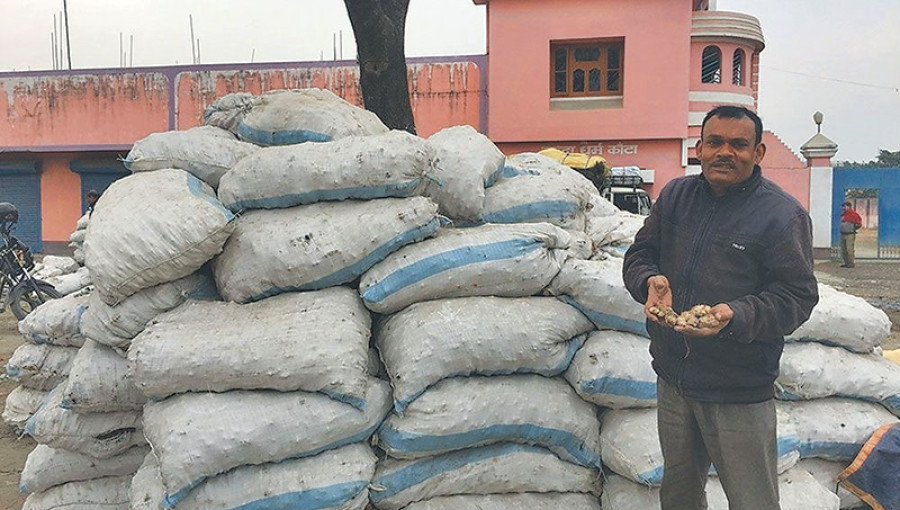Money
Ginger farmers breathe sigh of relief after India lifts ban
Ginger growers in the district have been elated by the Indian government’s recent decision to lift the ban on ginger export.
Ramesh Chandra Adhikari
Ginger growers in the district have been elated by the Indian government’s recent decision to lift the ban on ginger export. Ginger farmers in the eastern hill region have been worried about bearing economic losses after the southern neighbour stopped the import of Nepali ginger a month ago. Traders have started resuming ginger exports from Monday.
The ban was removed with the arrival of Minister of External Affairs of India, Sushma Swaraj to Nepal recently.
Farmers who had been worrying about incurring huge losses due to the drop in ginger price are now breathing a sigh of relief.
They are optimistic that ginger will fetch reasonable market price as export has resumed. The high-value spice is exported to India from Panitanki of West Bengal.
Man Bahadur Rai, a ginger farmer of Sahid Bhumi Rural Municipality, however has been expressing his grievances over the price. He said that ginger price has nosedived to Rs25 per kg from Rs190 per kg three years ago. However, Rai is optimistic that resumption of the ginger trade would increase the prices over time. “At current prices, farmers are not able to recoup their investment.”
Hukum Chandra Rai, another farmer in Thalthale, said that he reduced his ginger cultivation areas from 20 ropanis to 4 ropanis this year, due to huge price fluctuation.
Chongla Prasad Rai, a farmer from Akhisalla, has been producing ginger for nearly two decades. However, he chose to produce only about 800 kg of ginger this year from around 1,700 kg in previous years, owing to steep drop in prices. He stressed on the need to ensure proper market access for ginger.
Farmers complained that they have been incurring heavy losses due to frequent export ban imposed by India, the main market for Nepali producers. The ban is imposed when production surges in Nepal, they said. More than 80 percent of farmers in the district, including in Khoku, Chintang, Akhisalla and Aaha, are ginger producers.
Many organisations and projects, including the District Agricultural Office and the Unnati Project are promoting ginger farming in the district.
According to the office, 4,066 tonnes of ginger was harvested on 255 hectares in Dhankuta in the last fiscal year. However, this fiscal year, ginger acreage shrunk to 235 hectares. As a result, output has dropped to 3,903 tonnes.
According to Nepal Ginger Profile 2016, which was produced jointly by UK Aid-funded Samarth-Nepal Market Development Programme and the Nepal Ginger Producers and Traders Association, the spice has a huge overseas trading potential if
substantial improvements can be made in yield, quality and volume by investing more on research and development.
Even without a substantial improvement in quality, small trading hubs in India will continue to be major markets for local ginger, said the research report submitted to the Ministry of Agricultural Development recently.
It said that ginger grown in Harre of Surkhet, Phidim of Panchthar, Letang of Morang and Mainaghat of Nawalparasi was high in oil. The four districts produce 31,504 tonnes of ginger between them annually.
Essential oil determines the flavour and aroma of ginger. It is an important property of ginger in international trade, mainly in the food and beverages industries, the report said.
Globally, Nepal is the third largest ginger producer after China and India. In 2012-13, Nepal’s total ginger production reached 235,000 tonnes, out of which about 60 percent was exported. India is the main export market for Nepali ginger. The southern neighbour buys close to 94 percent of Nepal’s fresh ginger and 6 percent of processed ginger.
However, Nepal’s competitiveness in other countries has been extremely low over the years due to lack of information about the product’s physical and biochemical properties, the report said.




 13.25°C Kathmandu
13.25°C Kathmandu.jpg)















